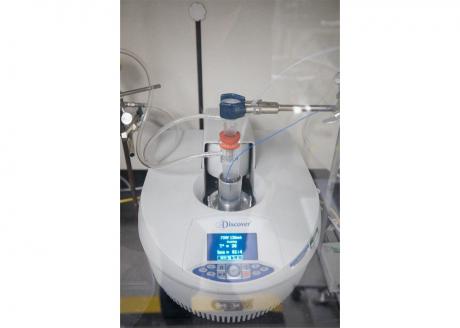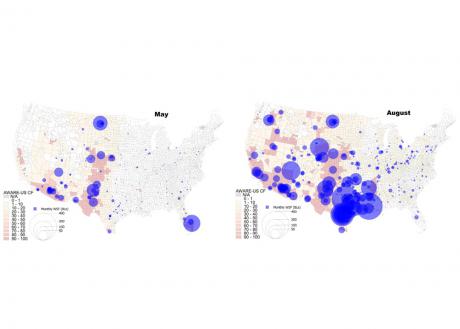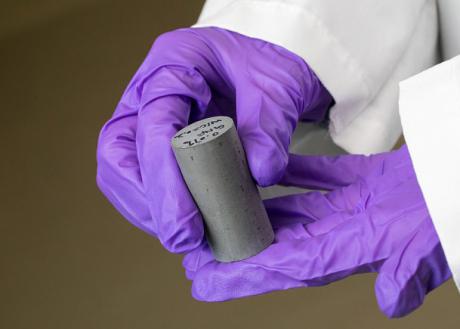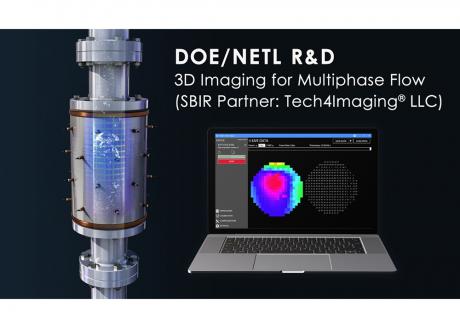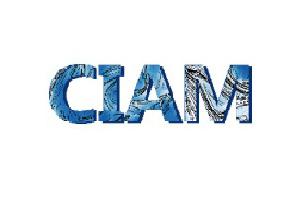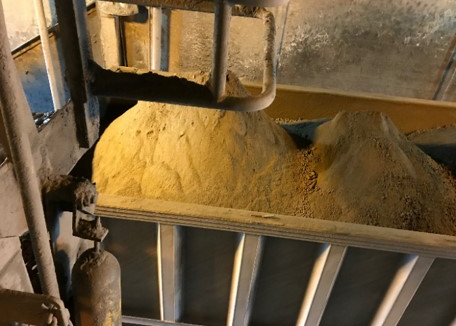NETL researchers envision a day when carbon dioxide (CO2) may transition from a waste gas that contributes to climate change to a high-value feedstock used in the production of fuels, pharmaceuticals, plastics, fertilizers and a range of consumer goods.
In a recent groundbreaking study, researchers reported making important strides in dry reforming, a process that reacts CO2, instead of steam or oxygen, with methane to yield the mixture of hydrogen and carbon monoxide known as synthesis gas or syngas, a chemical building block for many products.
Today, the U.S. Department of Energy’s (DOE) Office of Fossil Energy and NETL have announced a request for information (RFI) about hydrogen technology opportunities and research needs that could lead to advances in hydrogen technologies.
A new model developed by Argonne National Lab (ANL) and NETL, with support from DOE’s Office of Fossil Energy (FE), will help communities balance the often competing demands for water use among the power, agricultural, industrial, and residential sectors.
Most thermoelectric power plants in the U.S. rely on fresh water for cooling, resulting in significant water consumption, which can be a problem when local water supplies are scarce and those plants also draw on the same sources as nearby communities for use in daily life.
Today, the U.S. Department of Energy’s (DOE) Office of Fossil Energy (FE) and NETL have issued a request for information (RFI) to understand workforce development needs within the high-performance materials supply chain.
The advanced materials supply chain consists of four segments—alloy production, shaping, finishing, and component assembly. In the fossil energy industry, these segments create high-paying jobs and contribute to a secure energy supply in the United States. However, recent events and disruptions have shifted the focus of manufacturing needs.
Ongoing NETL research into advanced concrete additives could one day revolutionize the construction of bridges and other infrastructure, saving communities money and time while also spurring economic demand for one of the nation’s most abundant and historic resources: coal.
Due to its low cost, versatility, and malleability concrete remains the most popular construction material in the world. However, concrete, at least in its conventional cement paste composition, has several limitations.
With support from the U.S. Department of Energy’s (DOE) National Energy Technology Laboratory (NETL), Ohio-based engineering and research firm Tech4Imaging LLC recently wrapped up two successful projects resulting in the development of a noninvasive, 3D imaging sensor technology for multiphase flows in advanced energy applications.
Mary Anne Alvin, an NETL Technology Manager who has earned multiple awards and holds numerous scientific patents, will serve as co-editor of a new book on rare earth elements (REEs) that’s expected to provide the first comprehensive review of the technologies used to extract and process REEs for the manufacturing of high-tech products.
A digital tool developed by NETL researchers in collaboration with researchers from the University of Miami to make offshore oil production safer is being used around the world to inform a range of critical hydrocarbon exploration activities.
In an NETL-supported collaboration with Wayne State University (WSU), researchers used a newly developed sorbent and a process previously developed for nuclear applications to produce an economically viable concentration of rare earth elements (REEs) from domestic coal fly ash, signaling an important step toward commercialization.





